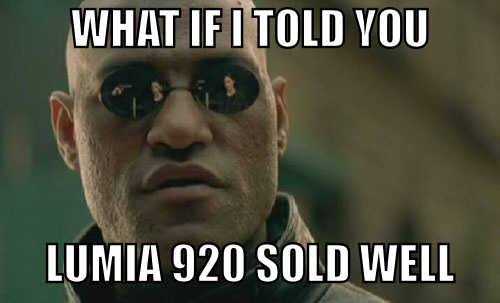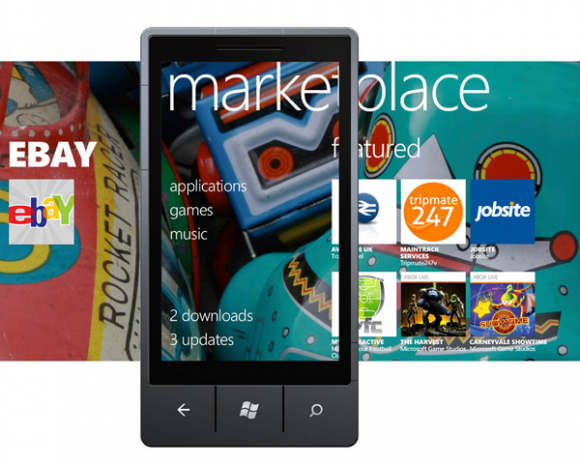With Apple’s introduction of the iPhone back in 2007 and Google releasing the Android just a year later, no longer is it possible to escape the world of the smartphone. What was once reserved for the aristocrats and Blackberry was the undisputed king, this marvel of technology is fitted in the pockets of millions around the world today. Whether at a social event, at the workplace, or even at Thanksgiving dinners, a heated discussion often arises; which is the best smartphone? Everyone has an opinion on the matter, ranging from people that develop mobile applications to those that only understand how to unlock the phone, make phone calls, and maybe even send text messages (albeit with proper grammar enforcement, I’m looking at you dad). Open vs closed operating system, free vs freemium vs premium games, software quality vs quantity are just some of the typical discussion I’ll hear about on a semi-regular basis but one contender has always been omitted in these “friendly” banters; the Windows Phone.

Showing up fashionably late to the game, Microsoft’s successor to its Windows Mobile platform is a phone that people should keep in mind while running through the shopping list this holiday season for that tech-savy special someone. It integrates quite nicely with other Microsoft services such as Xbox Live and Azure (think iCloud from Apple). It’s attractive, dynamic tiles on the home screen alone seems a generation ahead of it’s iOS counterpart and the option to apply colour themes is something that Android users are fond of. Despite the general consensus, the phone’s store or Marketplace as it’s called, is ripe with applications including games. Some of the notable mentions are Angry Birds, Plants vs Zombies, and Cut the Rope which all work just as well as on other platforms and is backed by major mobile game app vendors including Electronic Arts and Gameloft. The Windows Phone is also an attractive solution in the business sector, each one coming bundled with Microsoft Office. Those with Windows Phone 8 devices can also be assured that their data is secure, having been accredited with the prestigious FIPS 140-2 stamp of approval which is a U.S. government security standard that allows devices installed with the operating system to be sold and utilized by those employed by the government.

At a technical point of view, developing applications for the Windows Phone is better compared to other smartphones in a number of ways. Just like Android, the Windows Phone operating system is licensed by several third party manufacturers such as HTC and Nokia. The main difference here is that Microsoft has mandated a minimum hardware requirement for each iteration of the operating system, giving application developers a base to work on. With its powerful layout tools, applications can be designed to be (almost) completely resolution independent which is great for when supporting the tablet counterpart and to a certain extent, multiple screen orientation, both of which is a huge pain to handle on the iPhone when supporting versions prior to iOS 5. Personally, what I like most about developing for Windows Phone is the fact that both coders and designers can contribute to the project with their own separate development environments thanks to Microsoft’s inclusion of two IDE’s in the SDK. While programmers like myself can code the logic of the application using Visual Studios, a designer can use Expression Blend to develop the overall look and feel of the application. This does not limit the strength of either IDE’s as a person can develop the application entirely using one or the other, but someone exceptionally skilled can leverage the strengths of both IDE’s to reduce development time.
As much as I like the phone, both from a consumer and development perspective, it has a number of fallacies that prevent it from being exceptionally better than iOS or Android. First, Windows Phone 8 devices went on sale less than one year after its predecessor and yet those with 7 are unable to upgrade to the new version of the operating system making them obsolete, and I suspect the same will happen when 9 comes out. Secondly, many of the mandatory apps that come pre-installed on the phone such as Alarm, Calendar, and Hotmail inexcusably have a very poor user interface. In the case of Office, it lacks a substantial number of editing tools found in its desktop counterpart and the ones included are not intuitive to use. Until this changes, my only use for it is to open and view word documents while on the go. Finally, there are no games on the marketplace that stand out visually when compared to games on other mobile platforms such as Infinity Blade rendering the DirectX 9 GPU relatively untouched.
Despite these issues, I still consider the Windows Phone as a strong contender in the smartphone race. It combines strengths from both the Android and iOS operating systems as well as incorporates their proprietary UI framework ‘Metro’ to distinguish itself from other devices while making it familiar with people who use other Microsoft products, namely Windows 8 and Xbox 360. With its dedicated support for promoting the platform, as made evident by their recent acquisition of Nokia, Windows Phone is poised to continue earning a larger chunk of the international market. Without a crystal ball, it’s difficult to know for sure if the trend in sales will continue to be favourable for Microsoft in the long run, but at the pace it’s going, it’s only a matter of time before a friend or family member of yours will gloat to you about the new Windows Phone they have purchased.
Robert Kapiszka is a veteran software engineer at Push Interactions. His work at the company includes developing RxFiles, Co-op, and the Affinity mobile banking application. He enjoys long walks on the beach, watching sunsets, and fighting crime at night as the cape crusader.


